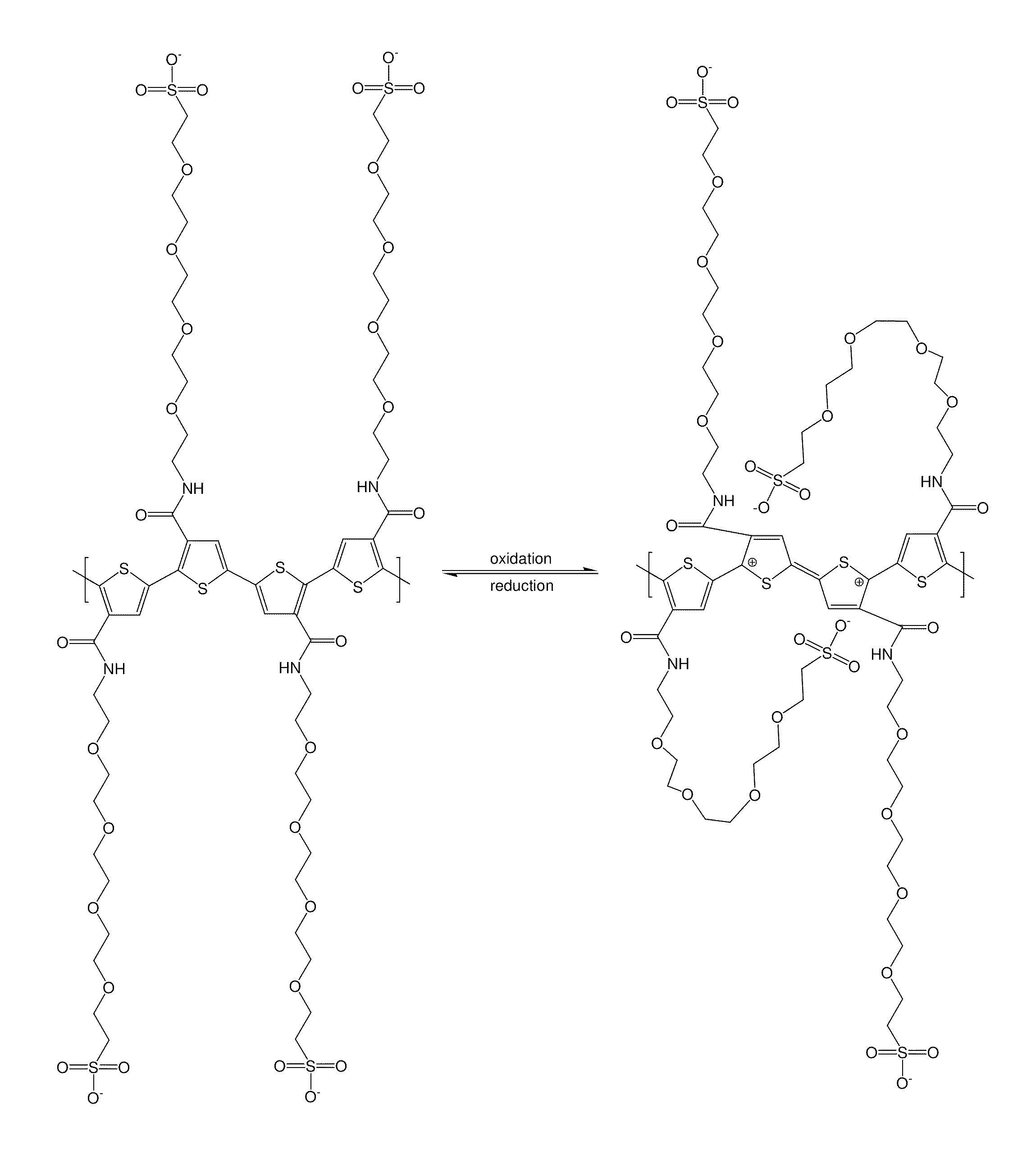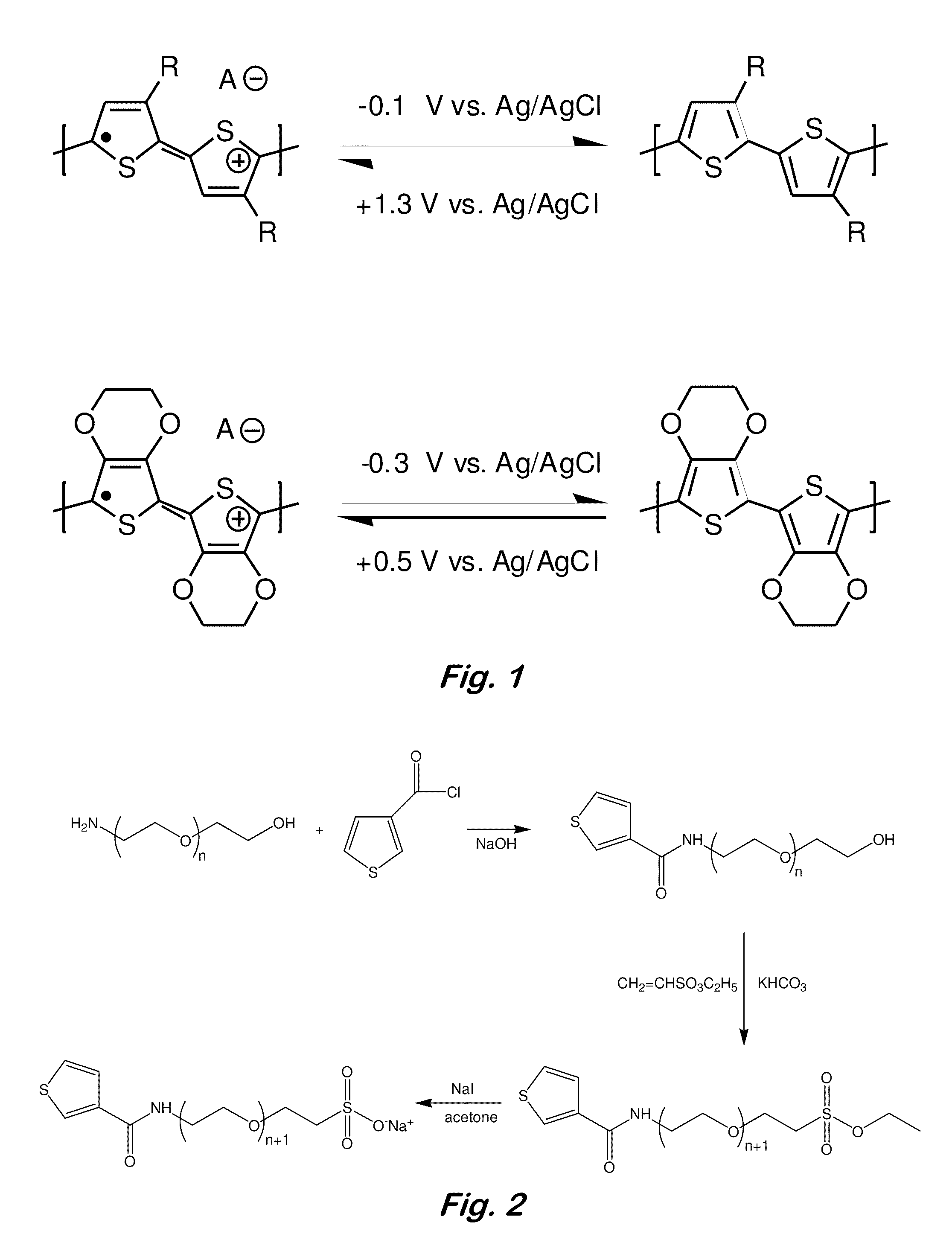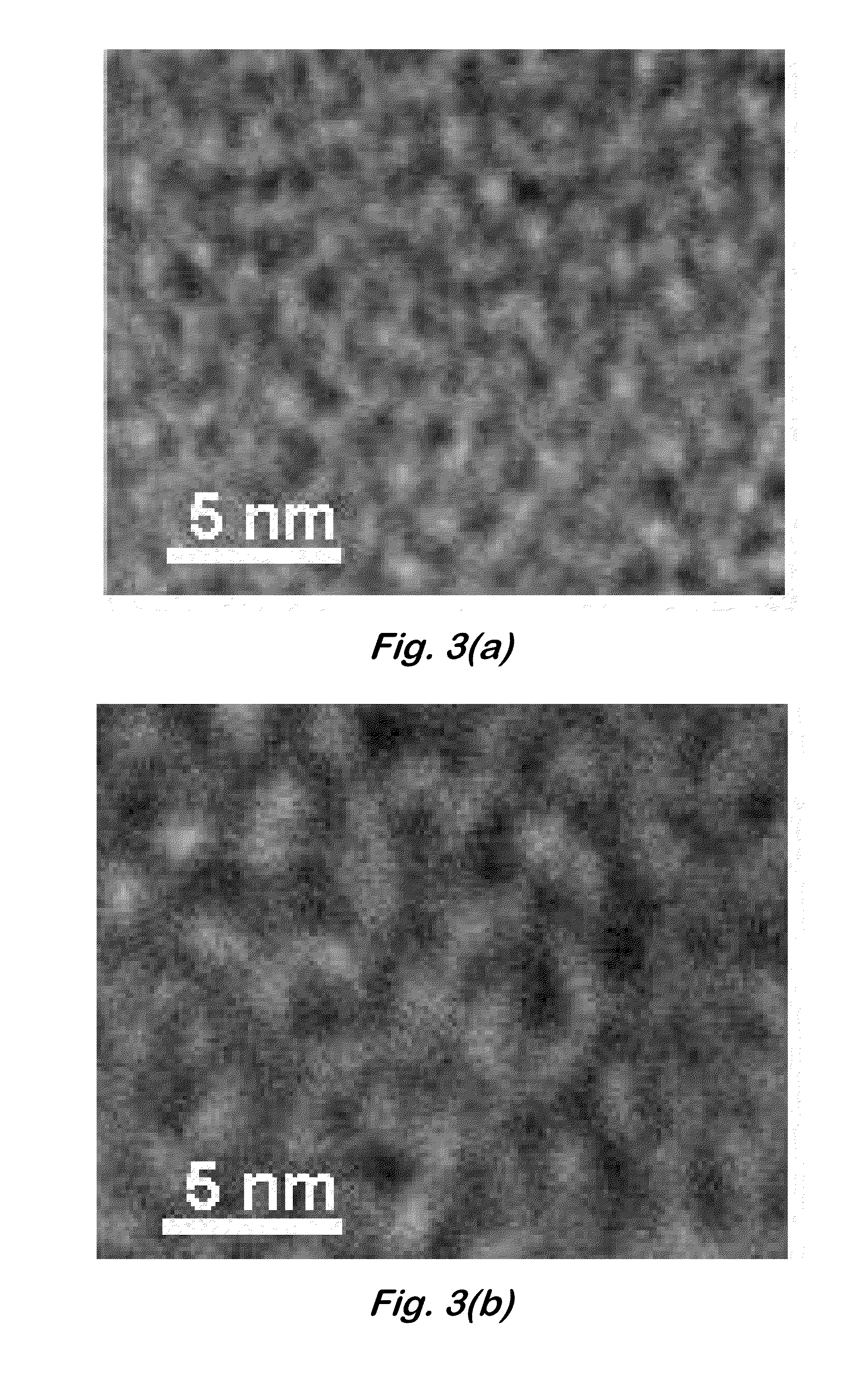Tether-containing conducting polymers
a conducting polymer and tether technology, applied in the direction of liquid electrolytic capacitors, casings/cabinets/drawers, casings/cabinets/drawers details, etc., can solve the problems of limited ability to undergo repeated cycling of materials, high complexity of mass transport processes, and high cos
- Summary
- Abstract
- Description
- Claims
- Application Information
AI Technical Summary
Problems solved by technology
Method used
Image
Examples
example 1
[0060]Chemical synthesis of TP—OEG-SO4 and DMTP—Solvents, gold wire, and precursors for the conducting polymers were purchased from Sigma-Aldrich. The monomer TP—OEG-SO4 was synthesized in four steps (FIG. 2). To form the tether precursor amide (Eq. (2)), a mixture (2.5 g, 19.5 mmol) of thiophene carboxylic acid, a molar excess of oxalyl chloride, and 1 drop of DMF in 10 mL of benzene was stirred overnight at room temperature (Marchand-Brynaert et al., Tetrahedron, 52 (1996) 5591). The solvent was removed under vacuum and the resulting residue was dissolved in THF. This solution was added dropwise at 0° C. to a stirred mixture of PEG-amine (Eq. (1)) (3.05 g, 16.0 mmol) in 50 mL of water and 1.28 g of NaOH. The reaction was stirred overnight at room temperature. The solution was acidified to a pH 4.0 with 1 N HCl solution. Extraction with ethyl acetate gave a yellow liquid. Gradient column chromatography in silica with ethyl acetate eluent followed by methanol yielded 2 g of the fina...
example 2
[0062]Electrochemical Synthesis of poly(TP—OEG-SO4) and poly(DMTP)—Dissolution of 15 mg TP—OEG-SO4 into 4:1 toluene:acetonitrile (v:v) containing 200 mM t-butylammonium hexafluorophosphate was followed by electropolymerization into a thin film onto a 0.2 mm diameter gold coil with a 1 cm2 immersion area using brief applications (90 seconds each) of 1.8 V vs. silver wire (power source CHI 660C Electrochemical Workstation, CH Instruments, Austin, Tex.). This particular solvent mixture was chosen because it supported the monomer as solute but the polymeric thin film had only a minimal solubility. A series of four applications of 1.8 V resulted in the deposition of 0.19 mg poly(TP—OEG-SO4) onto the gold coil, determined gravimetrically and by coulometry. In a similar manner, DMTP was electropolymerized onto a gold coil, forming a thin film of mass 0.30 mg. Cyclic voltammetry studies were performed at 18° C. in a sealed cell using a CHI 660C Workstation, in the solvent system 4:1 toluene...
example 3
[0063]TEM of polymers—Monomer was electropolymerized onto copper TEM grids in a manner similar to that described above. The grids were washed to remove dried salts, and viewed with a transmission electron microscope (Libra 120, Carl Zeiss SMT, Peabody, Mass.) at 120 kV. Images were captured on a bottom-mounted digital camera (Olympus SIS, Montvale, N.J.). FIG. 3 shows TEMs of the closed (a) and open (b) states. They clearly indicate that the polymer fine structure changes with oxidation state, with porous regions (lighter areas) becoming significantly larger when the polymer is switched into its oxidized form. If the sulfonate tethers form intra-molecular ion pairs, they would vacate the regions farther away from the polymer main chains and cause the electron density there to drop. Simultaneously, the darker regions (which correspond to polymer-rich regions), would become enlarged. This is, in fact, what is seen in the image. The polymer may assemble into larger aggregates when oxid...
PUM
| Property | Measurement | Unit |
|---|---|---|
| specific capacitances | aaaaa | aaaaa |
| operational voltage | aaaaa | aaaaa |
| operational voltage | aaaaa | aaaaa |
Abstract
Description
Claims
Application Information
 Login to View More
Login to View More - R&D
- Intellectual Property
- Life Sciences
- Materials
- Tech Scout
- Unparalleled Data Quality
- Higher Quality Content
- 60% Fewer Hallucinations
Browse by: Latest US Patents, China's latest patents, Technical Efficacy Thesaurus, Application Domain, Technology Topic, Popular Technical Reports.
© 2025 PatSnap. All rights reserved.Legal|Privacy policy|Modern Slavery Act Transparency Statement|Sitemap|About US| Contact US: help@patsnap.com



